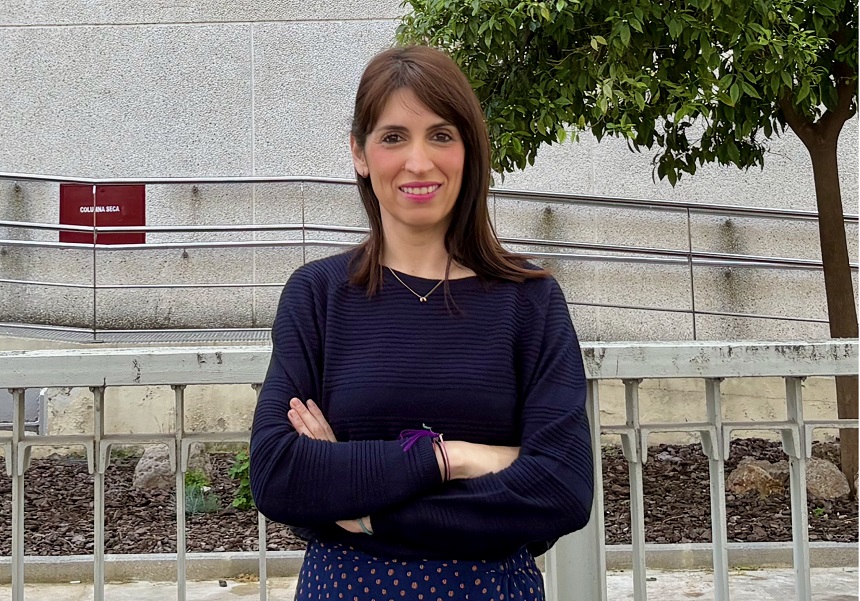A Norwegian pronunciation platform also allows practice in English, Spanish, Italian, Greek and Catalan
- Scientific Culture and Innovation Unit
- April 8th, 2025

The University of Valencia (UV) and the Norwegian University of Science and Technology (NTNU) have developed the multilingual digital platform Computer-Assisted Listening and Speaking Tutor (CALST), which aims to help users practise listening and pronunciation of second languages based on the pronunciation of their native language and the language they wish to learn. The research, led at the UV by Violeta Martínez-Paricio, lecturer in the Department of Language Theory and Communication Sciences, has been published in the Revista Española de Lingüística Aplicada and introduces the Spanish version of CALST.
CALST was initially designed to familiarise learners of Norwegian with the sounds and pronunciation of four of its dialects. At present, the platform also enables learners to practise the pronunciation of British English, Spanish, Italian, Greek and Central Catalan — the latter developed in collaboration with the University of Barcelona.
Unlike other language learning tools, CALST is based on a comparison of the phonological systems of the learner’s native language (L1) and target language (L2), carried out using the L1-L2 map database, which includes information on more than 500 languages. It focuses on training listening, pronunciation and spelling through simple exercises.
The virtual tutor therefore highlights those exercises that may be most relevant to the learner based on their native language and provides more personalised practice. Users can access Pygmalion, the prototype of the platform, free of charge by clicking here. The platform is designed for immigrants wishing to learn the language of their new country, as well as language learners in general, at a beginner level.
The article explains that, although numerous factors influence the acquisition of pronunciation in new languages, the native language significantly conditions the learning process. For instance, speakers of Mandarin Chinese, German or Italian face different challenges when learning Spanish.
Thus, exercises are offered with basic vocabulary, focusing on pronunciation features of the target language that do not exist in the speaker’s native language and may be particularly difficult. For example, a Hindi speaker studying Norwegian will not need to practise the retroflex sounds of this language, whereas Spanish speakers will, as they are unfamiliar with these sounds. Similarly, Hungarian and French speakers learning Spanish will need to train their perception and pronunciation of stress in positions in the word that do not occur in their own languages (initial and final, respectively).
There are also cases in which certain sounds are familiar in specific word positions in one language but not in others in the target language. For instance, a Spanish speaker usually has no difficulty pronouncing [s] or [p] in English when they precede a vowel (e.g. sane, capable), or when they appear in the middle of a word (e.g. asperger). However, they must learn to pronounce these consonants at the beginning of a word, as in spa or spy, where Spanish speakers tend to insert an [e] sound almost automatically before the 's'. Additionally, Spanish users must learn that in many contexts, the English [p] is not pronounced like the Spanish one, but is aspirated (produced with a puff of air).
Violeta Martínez-Paricio has been collaborating with this interdisciplinary team, led by Jacques Koreman (NTNU), since 2014 as an expert in phonology and linguistic typology. Together with Koreman, she has recently developed content for practising Spanish pronunciation (Martínez-Paricio & Koreman 2025). Her other works focus on the study of universal principles and trends that regulate stress and syllabification in the world's languages, phonological constraints in the formation of abbreviations and acronyms, and the interplay between phonology and poetry.
The development of the Spanish version of CALST is funded by the European Commission (Horizon 2020 SC6-MIGRATION, easy Rights project, ref. 870980), and by projects CIGE/2022/114 from the Valencian Regional Government and PID2020-113971GB-C21 from the Spanish State Research Agency (AEI) and the Ministry of Science and Innovation (MCIN).
Article reference: Martínez-Paricio, Violeta & Jacques Koreman (2025). “The Spanish Computer-Assisted Listening and Speaking Tutor. A multilingual approach to pronunciation training”. Revista Española de Lingüística Aplicada / Spanish Journal of Applied Linguistics, 38(1), 134–161. https://doi.org/10.1075/resla.22046.mar














